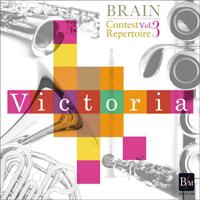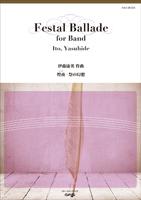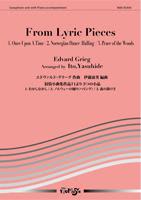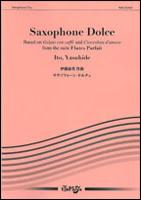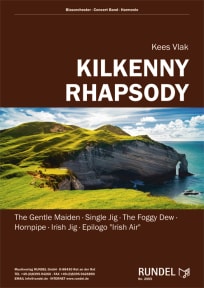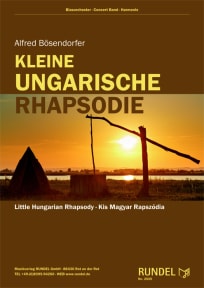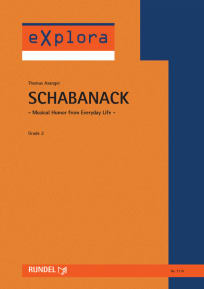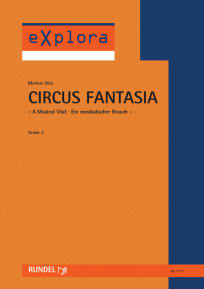Concert Band
La Follia nel Bosco
Fantasia for Wind Ensemble
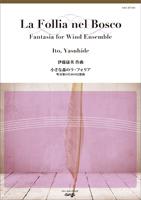
Concert Band
La Follia nel Bosco
Fantasia for Wind Ensemble
Composer
Genre
Occasion
Performance time
00:06:20
Grade Level
Ober-/Höchststufe
Publisher
Ito Music
Size
A4
Info
Full Score + Parts
Order Number
NAS-BT440
Release Date
2013
Read
Youtube
Wishlist
Print
Share
Info
La folia (Portuguese) or la follia (Italian), bearing the literal meaning of "madness" or "insanity", is also a very fast dance in triple time, which supposedly originated in the Iberian Peninsula. By the 17th century, it has taken on a calmer character, eventually taking form as a variation based on a specific basso ostinato (obstinate bass).
Various composers have produced works based upon la folia. Composers such as A. Corelli (Sonata, Op. 5-12), F. Liszt (Rhapsodie espagnole), and S. Rachmaninov (Variations on a theme by Corelli).
In March 2013, I wrote La Follia, Concertino for Band, upon receiving a commission from Tokyo Kosei Wind Orchestra. This concertino is of a high level of difficulty in terms of technique, as it is intended for a professional wind band. By using the same elements in the original piece, I wrote a more compact version, La Follia nel Bosco in December the same year, commissioned by the wind band of Kaishin Daisan Junior High School in Nerima ward, Tokyo. The members of the band, who based their idea from the impression they held for the piece, created the Italian title, meaning 'little woods'. Mr. Lorenzo Della Fonte kindly assisted in translating the title into Italian.
Although the piece was written for a junior high school band, it comprises of rich musical elements, which could prove useful to the players' development. Naturally though, this piece might offer interesting challenges even to experienced players.
It is in free variation form with no fixed harmonic progression, and most rehearsal marks are assigned to each variation.
As it is a work for small bands, it is most ideal to have each part performed by only a single player, apart from the clarinet section, which should be performed by 2 persons for each part. The number of wind players should add up to 24 in total. Furthermore, though not indicated on the score, an oboe and/or a bassoon may also be included.
On another note, it can also be performed without the 3rd clarinet, 3rd horn or 3rd trumpet, which would result in a minimum ensemble of only 18 wind players. Also, quite a number of percussion instruments are to be used. However though, if the passages in parentheses are omitted, it can be effectively performed with only six percussionists. And, with a little creativity, the number of percussionists may be further reduced.
Much attention has been paid in the orchestration of this piece, so as to produce a wide range of tone colors. Finally, by studying the full score thoroughly, the interaction between the various instruments can be understood even better.
(Yasuhide Ito)
Various composers have produced works based upon la folia. Composers such as A. Corelli (Sonata, Op. 5-12), F. Liszt (Rhapsodie espagnole), and S. Rachmaninov (Variations on a theme by Corelli).
In March 2013, I wrote La Follia, Concertino for Band, upon receiving a commission from Tokyo Kosei Wind Orchestra. This concertino is of a high level of difficulty in terms of technique, as it is intended for a professional wind band. By using the same elements in the original piece, I wrote a more compact version, La Follia nel Bosco in December the same year, commissioned by the wind band of Kaishin Daisan Junior High School in Nerima ward, Tokyo. The members of the band, who based their idea from the impression they held for the piece, created the Italian title, meaning 'little woods'. Mr. Lorenzo Della Fonte kindly assisted in translating the title into Italian.
Although the piece was written for a junior high school band, it comprises of rich musical elements, which could prove useful to the players' development. Naturally though, this piece might offer interesting challenges even to experienced players.
It is in free variation form with no fixed harmonic progression, and most rehearsal marks are assigned to each variation.
As it is a work for small bands, it is most ideal to have each part performed by only a single player, apart from the clarinet section, which should be performed by 2 persons for each part. The number of wind players should add up to 24 in total. Furthermore, though not indicated on the score, an oboe and/or a bassoon may also be included.
On another note, it can also be performed without the 3rd clarinet, 3rd horn or 3rd trumpet, which would result in a minimum ensemble of only 18 wind players. Also, quite a number of percussion instruments are to be used. However though, if the passages in parentheses are omitted, it can be effectively performed with only six percussionists. And, with a little creativity, the number of percussionists may be further reduced.
Much attention has been paid in the orchestration of this piece, so as to produce a wide range of tone colors. Finally, by studying the full score thoroughly, the interaction between the various instruments can be understood even better.
(Yasuhide Ito)

